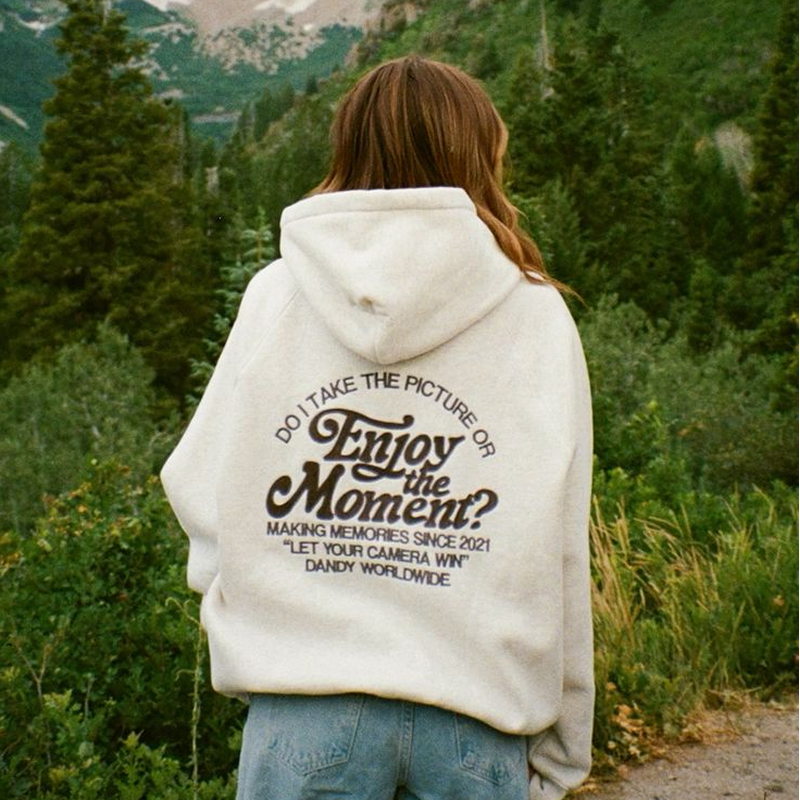Fashion is often associated with glamor, exclusivity, and trends that rise and fall. Yet, when you look around in any city, on any campus, or at any concert, what you’ll notice most are T-shirts and hoodies. They are not loud in design, yet their cultural presence is deafening.
The persistence of these garments across decades, demographics, and continents cannot be explained solely by practicality. Instead, the appeal of T-shirts and hoodies lies deeply in human psychology—our needs for comfort, identity, belonging, and expression.
This essay explores the psychological foundations behind why people of all backgrounds gravitate toward these basics, making them the most enduring wardrobe staples of modern history.
Chapter 1: The Comfort Instinct
Physical Ease
Humans are drawn to soft, breathable fabrics. A cotton T-shirt or fleece-lined hoodie satisfies the brain’s craving for comfort and tactile pleasure. The sensory experience reinforces positive associations.
Stress and Clothing
Psychologists note that people often choose “comfort clothes” during stressful times. Hoodies, with their cocoon-like hoods, act almost as wearable security blankets, creating a psychological buffer against the world.
Chapter 2: The Psychology of Simplicity
Decision Fatigue
Every day, humans make thousands of micro-decisions. Fashion choices can be overwhelming. Basics like T-shirts and hoodies reduce cognitive load, offering easy, low-stress options.
The Uniform Effect
Figures like Steve Jobs with his black turtlenecks or Mark Zuckerberg with his gray T-shirts demonstrate the psychological relief of a uniform. Hoodies and tees provide a similar sense of consistency and stability.
Chapter 3: Belonging and Social Identity
The Tribe Mentality
Humans are tribal. A graphic T-shirt with a band logo or a hoodie with a sports team emblem signals group affiliation. This satisfies the need for belonging, one of the most fundamental psychological drives.
Youth Culture and Identity
For teenagers and young adults, clothing is a shortcut to social acceptance. Wearing the right hoodie brand—whether Supreme in New York, BAPE in Tokyo, or Daily Paper in Amsterdam—signals cultural fluency and social positioning.
Chapter 4: Expression Without Words
Silent Communication
T-shirts and hoodies often carry slogans, graphics, or symbols. They allow wearers to communicate beliefs, humor, or moods without speaking.
Example: A “Save the Planet” hoodie signals environmental values, while a vintage rock tee signals music taste.
Safe Individualism
While bold fashion may alienate some, basics with graphics allow safe self-expression: different, but not too different.
Chapter 5: The Hoodie as Psychological Armor
Concealment and Protection
The hood offers literal and symbolic cover. Psychologists describe it as a personal shield—wearers feel less exposed, more secure.
Power of Anonymity
This anonymity can be empowering. From skateboarders to hackers, the hoodie provides a cloak of privacy, creating an identity that is simultaneously hidden and expressive.
Chapter 6: Nostalgia and Memory Encoding
Clothing as Memory Markers
We don’t just wear T-shirts and hoodies; we attach memories to them.
The concert tee from a first live show.
The college hoodie that represents years of friendships.
These garments become emotional artifacts, not just fabric.
The Comfort of Familiarity
Psychologically, humans gravitate toward the familiar. Basics remind us of youth, comfort, and formative experiences.
Chapter 7: Psychological Power of Uniform Adoption
Sports Teams and Unity
Wearing matching T-shirts or hoodies in sports builds team cohesion and identity. This boosts confidence and belonging.
Protest Movements
When large groups wear identical slogan tees, they create a collective psychological force, amplifying their message through visual unity.
Chapter 8: Status and Aspiration
From Basic to Symbol of Cool
While basics are accessible, branding transforms them into status symbols. A $900 Balenciaga hoodie satisfies psychological needs for prestige and recognition.
The Logo Effect
Logos trigger social recognition. A Supreme hoodie signals not just clothing taste but membership in a cultural elite.
Chapter 9: Gender, Age, and Universality
Gender-Neutral Appeal
Unlike dresses or suits, T-shirts and hoodies are psychologically non-threatening. They appeal to all genders because they lack rigid associations.
Ageless Comfort
From toddlers to retirees, basics span age groups. This universality provides psychological reassurance: you’re never “too old” or “too young” to wear them.
Chapter 10: Consumer Psychology and Marketing
Limited Drops and FOMO
Scarcity marketing plays on psychology. Limited-edition hoodies tap into fear of missing out (FOMO), driving irrational demand.
Personalization
Customized tees and hoodies appeal to the need for individuality, boosting emotional connection to the garment.
Chapter 11: Cross-Cultural Psychology
Shared Human Needs
In Tokyo, Lagos, or New York, people share core psychological desires: comfort, belonging, identity. T-shirts and hoodies meet these universally.
Cultural Adaptability
A hoodie can carry Islamic calligraphy, anime characters, or protest slogans. Its blankness makes it infinitely adaptable across cultures.
Chapter 12: The Pandemic Effect
Hoodies as Work-from-Home Uniform
During COVID-19 lockdowns, hoodies became symbols of home comfort and safety. Psychologists observed a surge in “comfort clothing” as coping mechanisms.
Tees as Optimism Carriers
Graphic tees with positive slogans (“Stay Strong,” “Better Days Ahead”) acted as psychological boosts during uncertain times.
Chapter 13: The Future of Psychological Attachment
Wearable Tech Integration
Soon, T-shirts and hoodies may carry sensors for stress or heart rate, turning comfort wear into emotional health tools.
Sustainability and Ethical Satisfaction
Psychologically, consumers gain moral satisfaction from wearing sustainable basics. The future will merge comfort with conscience.
Conclusion: The Basics of Being Human
The enduring popularity of T-shirts and hoodies cannot be reduced to fashion trends alone. They thrive because they satisfy fundamental psychological needs:
Comfort for the body
Belonging for the tribe
Expression for the self
Security for the mind
They are not merely basics. They are psychological tools of survival, identity, and connection.
As long as humans crave simplicity, comfort, and belonging, the T-shirt and hoodie will remain not just wardrobe essentials but timeless reflections of the human psyche.



